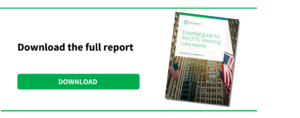
The SEC SBSR & CFTC Makeover – Where to from here?
After the 2008/2009 global financial crisis, regulators around the world came up with a series of mandates and objectives that aimed to prevent and minimize another crisis in the future. The U.S. was the first country to take on the mandate through legislation. The Dodd-Frank Act was signed into law almost 11 years ago and ushered in a new area of financial oversight, governance and reporting requirements.
The Act gave the two main U.S. financial regulators, the CFTC and the SEC, the ability and mandate to introduce rules governing OTC derivatives reporting, clearing and execution requirements.
The early years of CFTC reporting
In 2013, the CFTC reporting rules were implemented, and the derivatives industry undertook a massive effort to spin up project teams cobbled together from technology, risk, compliance, legal, operations and front office to review, interpret and implement these new rules of the road. Confirmation platforms, SEFs, clearing houses, as well as risk management, OMS and EMS providers all played a big part in coming together to create solutions for clients in scope for the new reporting rules. As these rules were new, participants were all learning what the regulators wanted, what the Trade Repositories wanted and how firms were able to collect and report all the data required. Regulatory reporting was a problem generally solved through tactical solutions leveraging existing systems, processes and expertise.
Firms have been reporting their trades, positions and valuations to a Swap Data Repository for over 8 years now. Since then, the rest of the world has caught up with similar types of legislation passed in Canada, Europe, Australia, Singapore, Hong Kong and Japan.
A fresh new look for CFTC & SEC
Almost a decade after the first reporting rules went live, 2020 brought in final rules on a CFTC rewrite, which is the most substantive and comprehensive change to the reporting rules since their introduction.
The reporting rules take effect May 25, 2022. The CFTC is aligned to the technical specifications with global regulators to achieve harmonization and standardization across the industry, reducing the burden on market participants (removal of valuation reporting non-SD/MSPs and reporting timing of T+1 or T+2), as well being more prescriptive in the data they are requiring from participants.
As Dodd-Frank split the regulatory oversight of derivatives between the SEC and CFTC, SEC products have not been reportable until now.
SEC completed and published Regulation SBSR—Reporting and Dissemination of Security-Based Swap Information (SBSR), with the first compliance date of reporting to be November 8, 2021. This is a brand-new regulation that firms need to comply with.
Security-based swaps (SBS) are those that reference a single security or loan or a credit default swap that references a narrow-based index:
Market participants in scope for SBSR will need to start reporting OTC derivative trades across Equity, Credit and Interest Rates asset classes.
The key SBSR timelines are as follows:
- Compliance Date 1: Reporting newly executed SBS on or after the first Monday that is the later of:
- six months after the date on which the first SBSDR that can accept transaction reports in that asset class registers with the SEC (the first SBSDR was approved May 7, 2021); or
- one month after the compliance date for registration of security-based swap dealers (SBSDs) and major security-based swap participants
- Compliance Date 2: Public dissemination will commence the first Monday that is three months after Compliance Date 1
- Compliance Date 3: All historical SBS in that asset class must be or have been reported to a registered SBSDR two months after Compliance Date 2, to the extent that such information is available
The successful makeover – what to consider?
Firms will need to run two programs in parallel to stay in lock step with regulatory obligations, SEC SBSR in November 2021 and the CFTC rewrite in May 2022, certainly not an easy feat given the complexity and scope of both regulations.
Most firms will leverage their existing builds to cover SBSR reporting but looking at the holistic obligations and the upcoming regulatory change calendar, many are using the CFTC rewrite as the catalyst to review their internal solutions, as well explore what vendor products are out in the marketplace. The continued regulatory change and the investment needed to support in-house systems not designed specifically for regulatory reporting is a big reason many are considering bringing in technical expertise through vendor products. The solutions built in 2013 to comply with the original CFTC requirements were not always designed for the complexity, flexibility and the efficiency that the burdens of trade reporting have demanded from the industry.
SEC SBSR reporting is only 3 months away, firms should be in delivery and execution mode. In parallel, there is an opportunity for firms to review their in-house reporting solutions and ask some hard questions about the readiness, willingness and cost to continue supporting the ever- changing regulatory requirements. Today it is the CFTC rewrite and EMIR REFIT on our heels, tomorrow it will be additional changes in APAC and Europe regulations.





